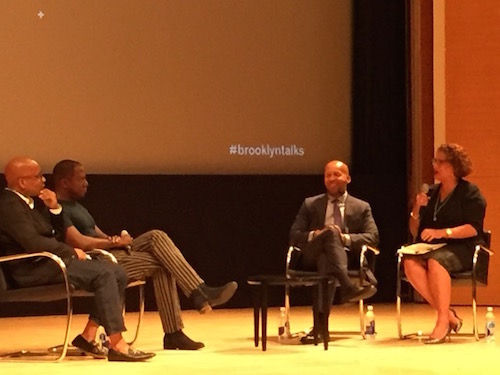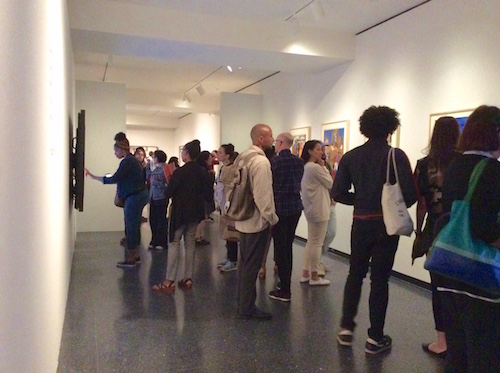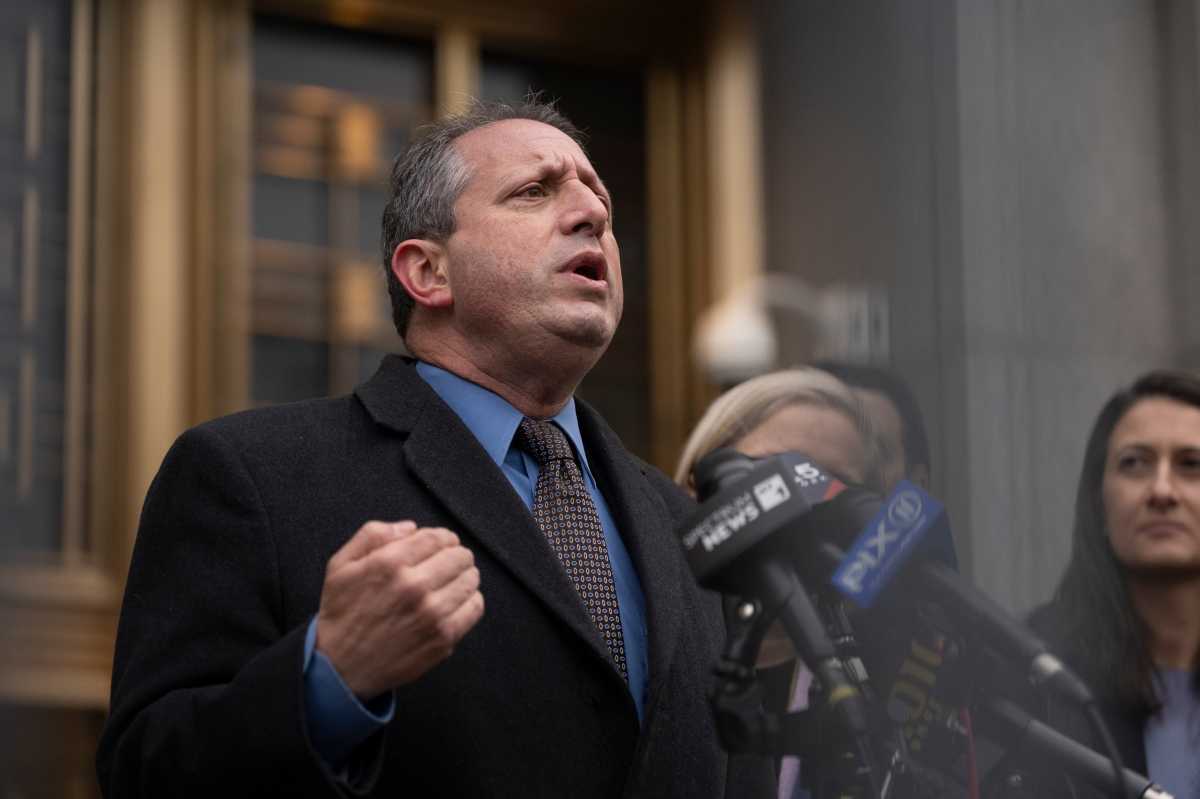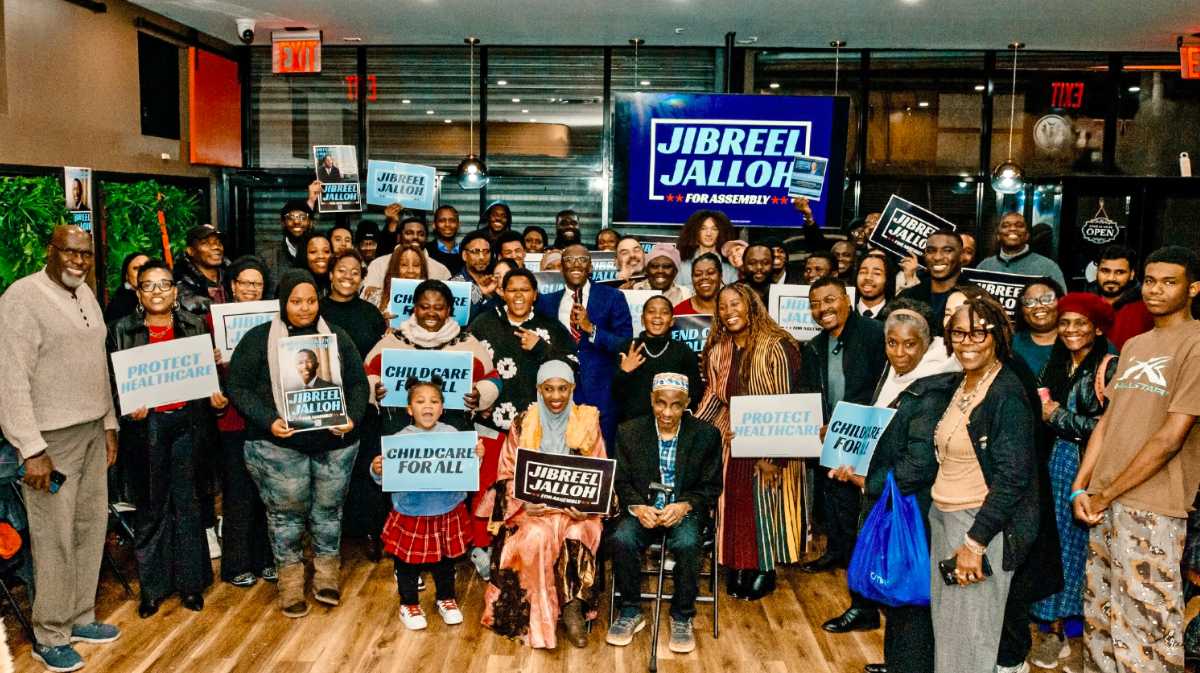Initially, with much convincing from my editor, I set out to decry the idea of a lynching exhibit that intentionally excluded graphic photos – which looked like me – dangling from a noose, beaten or dragged beyond recognition. I thought the impact of the jarring history of Jim Crow lay in graphic images, much like the limp, skeleton-like frame of a Holocaust victim. I was wrong.
As film never quite lives up to the book –– nor does the visual of a hanging body to the powerful stories of a lynched descendent. When Tarabu Betserai Kirkland tells the story of his grandfather’s friend who was shot after having been accused of assaulting a white woman, he delivers an unexpected twist by saying the man was kept alive in a doctor’s office for the sheer purpose of being lynched the following day — a point untranslatable through photography.

Today is the opening day of Brooklyn Museum’s multimedia exhibit, The Legacy of Lynching: Confronting Racial Terror in America. The presentation runs in tandem with the Equal Justice Initiative (EJI) –– the brainchild and non-profit organization of public interest attorney, Bryan Stevenson. He attempts to provoke dialogue of a blemished American history, by honoring African American victims of lynching –– without a single photo depicting the outcome of mob killings.
This unorthodox use of storytelling rather than explicit visuals lends to a creative juncture of videos, a short documentary, photographs, an interactive map presenting EJI’s research along with a host of artists whose work has championed peace and justice.
We see storytelling and written word trump photography once again in the testimonies of the Dedman/Myles family. Granddaughters of Thomas Miles discovered his untimely demise only after finding a news clipping entitled, “A Negro Lynched.” The details of his murder lay tucked away in a small box under the bed of their recently deceased grandmother, until then no one knew the story of grandfather Miles. But, as the exhibit suggests, the legacy of lynching remains prevalent today –– the “y” in Dedman/Myles appeared only after the lynched victim’s family abruptly uprooted to California and changed the spelling of their surname.
“Telling stories to win more people over to the justice cause” said Stevenson who addressed an audience of 300 in the Iris and B. Gerald Cantor Auditorium and another 200 in the lobby of the museum during a simulcast. Accompanying Stevenson were two artists whose work are on display at the exhibit –– Sanford Biggers and Glenn Ligon.
Ligon’s piece, [Untitled] (Crowd/The Fire Next Time), is the first work of art upon entering the gallery. Sparkling black coals spell out a James Baldwin quote over blurred screen-print of the 1995 Million Man March in Washington D.C. While Sanford Biggers’ 2007 art installation of Blossom is on view on the 1st floor of the Martha A. and Robert S. Rubin Pavilion. Biggers was inspired by the Jena 6 story. In 2006, six African American students convicted of assaulting a white student after the white student allegedly threatened the six African American students with a gun. Their initial verdicts and sentences incited protests throughout the country.

The multi-media project also includes an interactive map detailing the numbers and locations of lynching occurring throughout 1877 and 1950 –– the time period in which Stevenson focuses his project of brutal mob killings. When you touch the five white specks amongst the sea of blood red dots give a chilling accounts of lynching in Florida, Mississippi, Alabama Tennessee and Texas.
The well-orchestrated production was made possible by a $2.4 million grant from Google to Stevenson’s Equal Justice Initiative in support of his non-profit organization and future museum endeavor. The Alabama attorney has dedicated much of his career to representing the underserved in cases that involve excessive and unfair sentencing and reversing wrongful death penalty convictions. His ongoing conversation of incarceration as the new lynching was captured in Ava DuVernay’s Netflix documentary,13th, and will be further explored when his museum, Enslavement to Mass Incarceration Museum in Montgomery, AL opens.
“Lynching has a legacy,” said Stevenson. “It’s time to end the silence.”
The exhibition is on view from July 26 through September 3 at the Brooklyn Museum, 200 Eastern Parkway.










